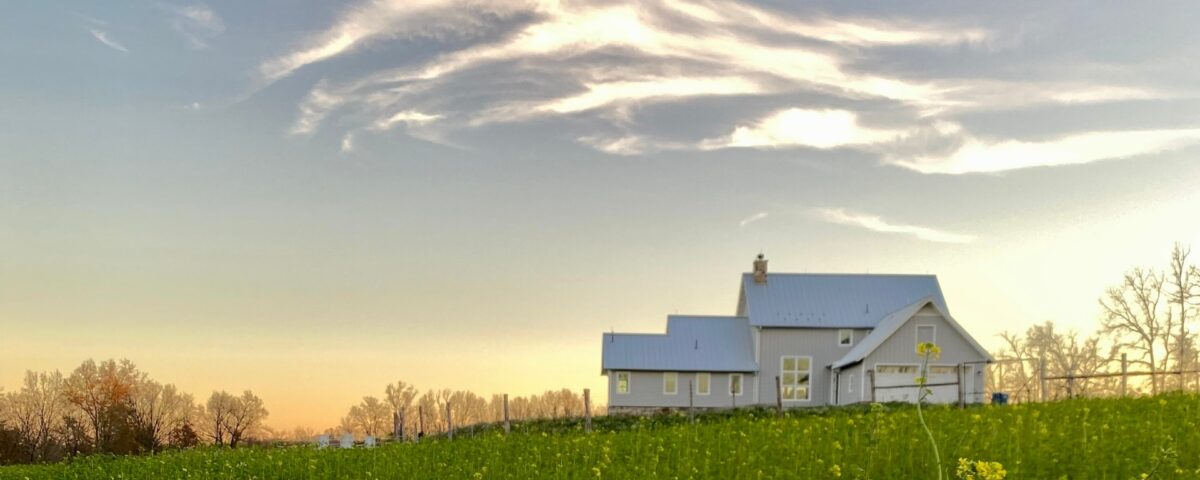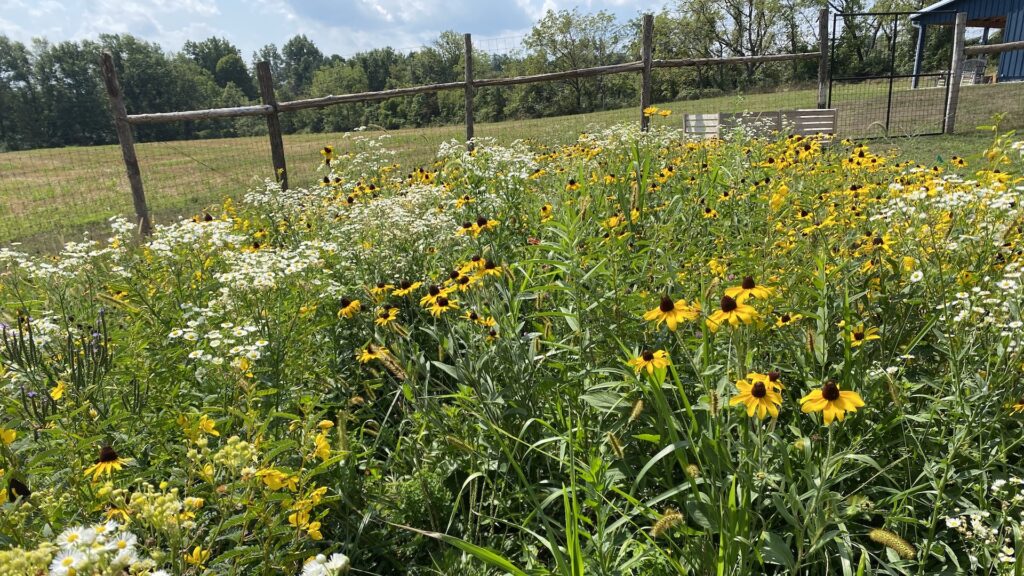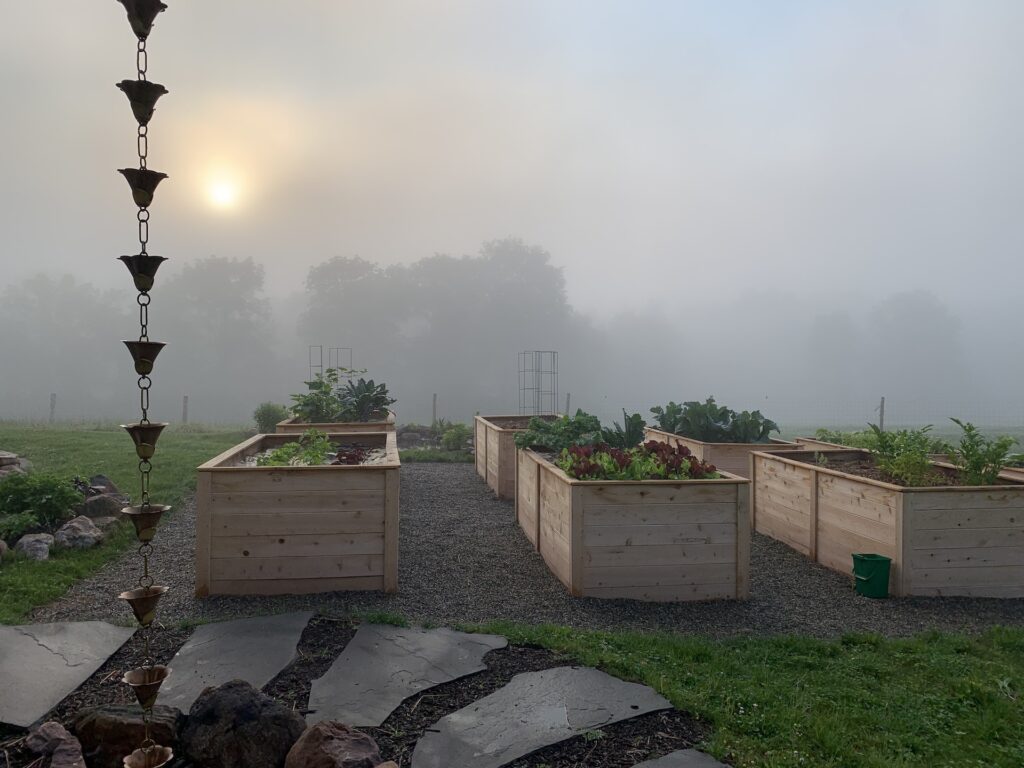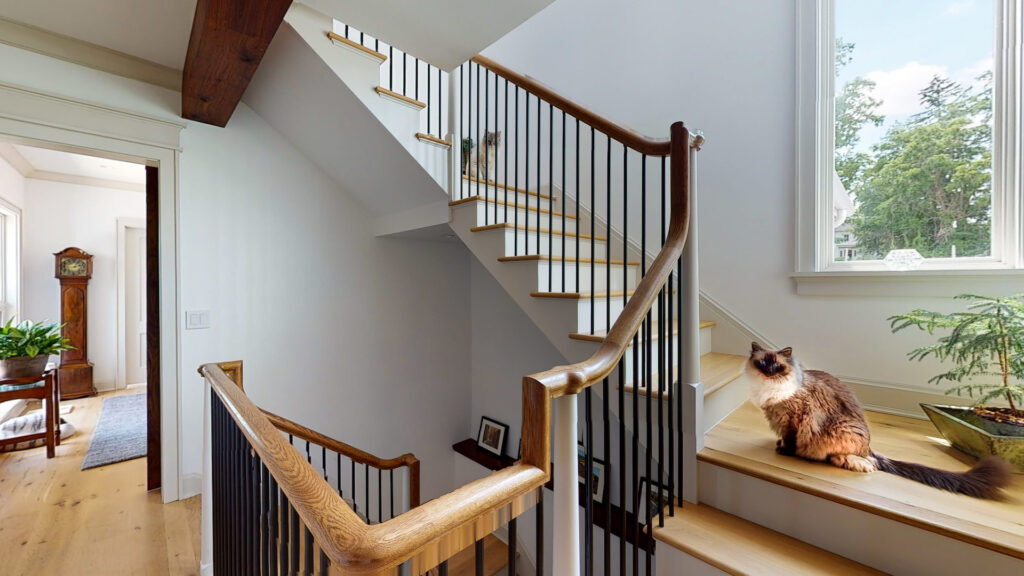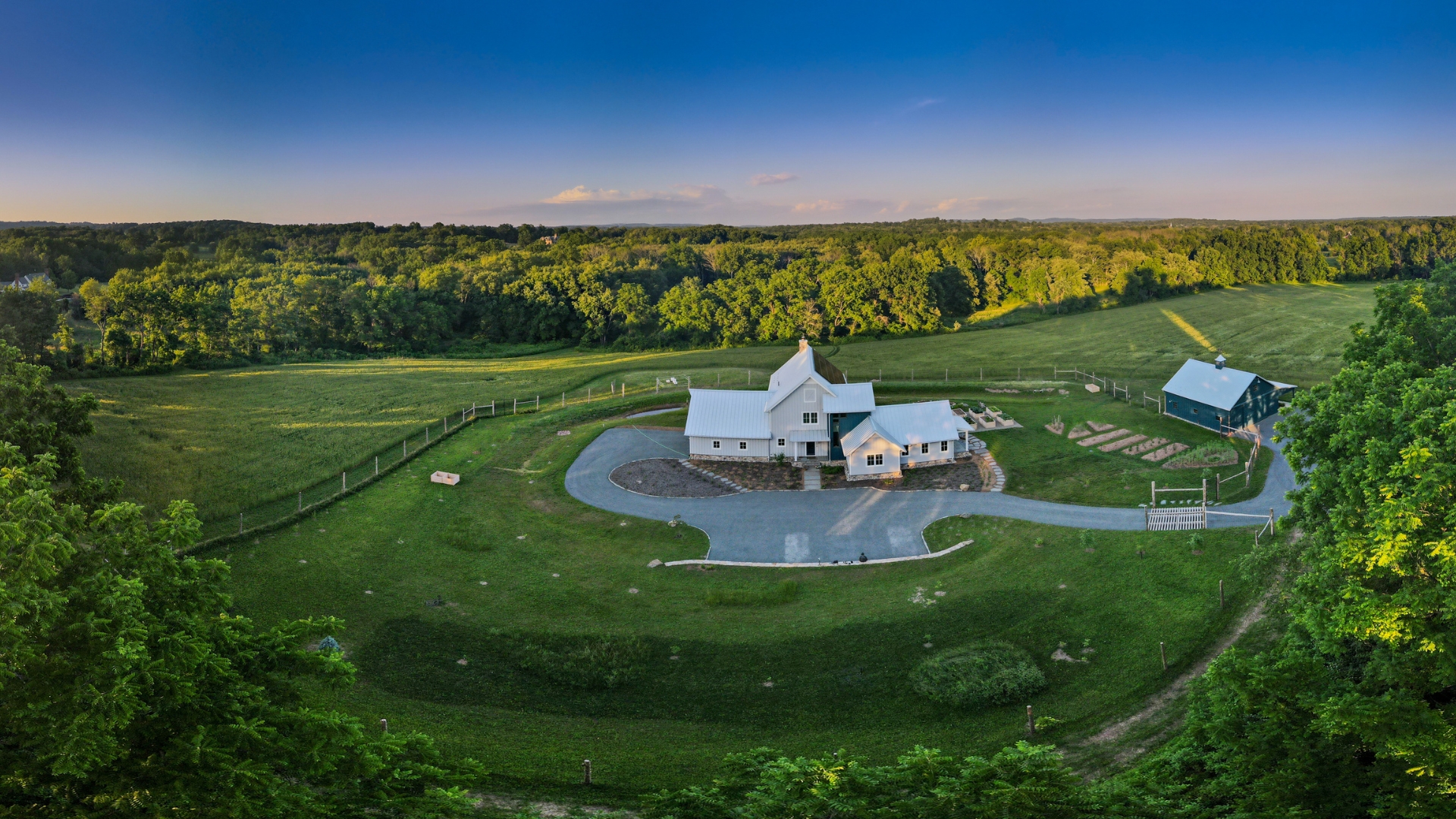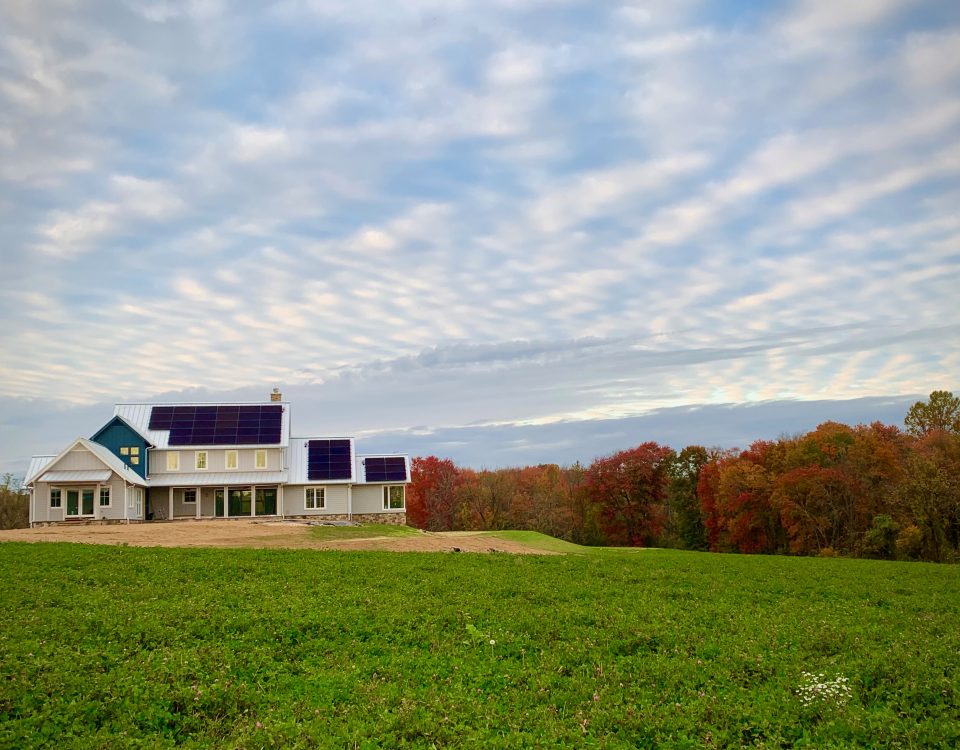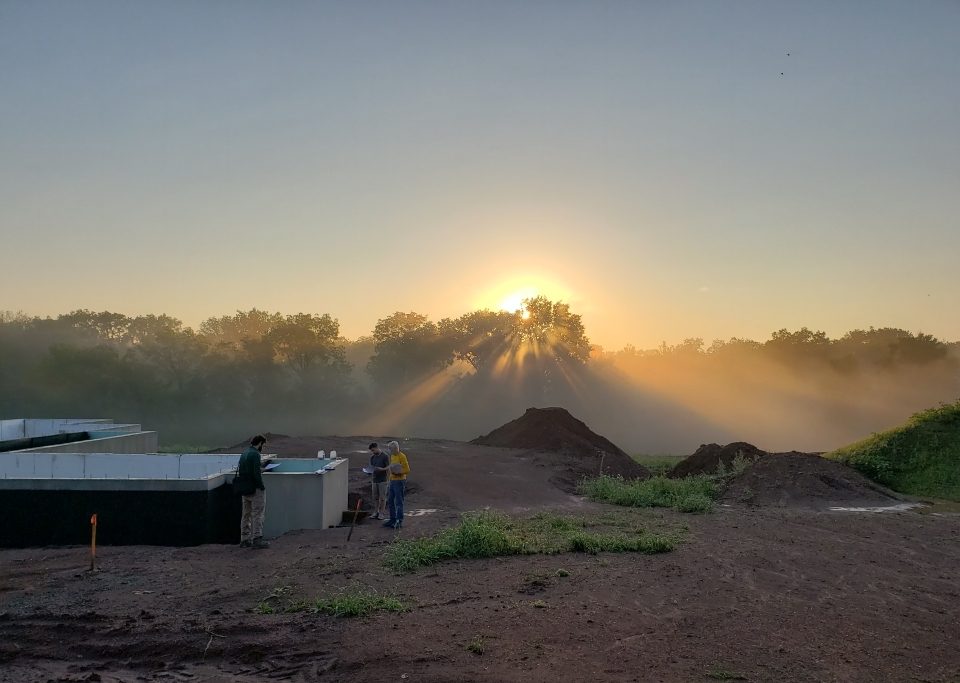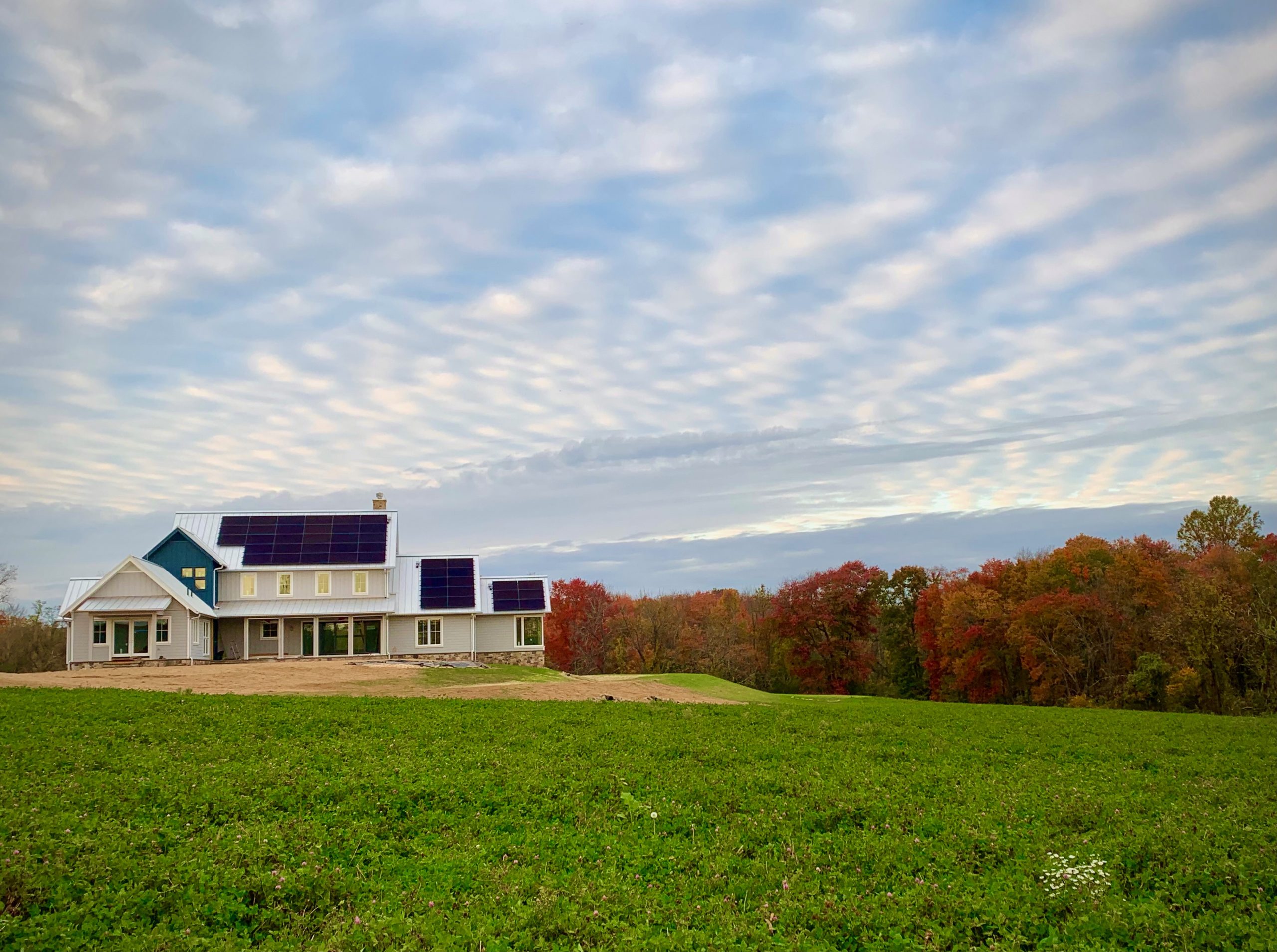
Beyond R-Value: Insulation and the Zero-Energy Home
November 6, 2021This is the final installment in a blog series that shares the vision, architectural challenges, and construction effort involved in building a new house, one that defies conventional home design by integrating the environment in a rigorous, unprecedented and beneficial way.
Based on a conversation with Jason and Deborah D., Homeowners and Proprietors of Cold Brook Farm, March 7, 2023
“Make no little plans; they have no magic to stir men’s blood – make big plans, aim high in hope and work.”
– Daniel H. Burnham, American architect
On December 22, 2022, we celebrated our one-year anniversary at Cold Brook Farm (CBF), and it was truly a year to remember.
Life at Cold Brook Farm has been everything we dreamed it could be and more, but at the same time, each day was filled with contrasts. On the one hand, we began with six pages of design goals for our zero-energy home, and remarkably, achieved each one. On the other hand, there were a plethora of factors outside our immediate control—weather, the pandemic—and as far as these events were concerned, almost nothing touched by them went to plan. Tack on the worst drought in New Jersey in twenty years and an acute labor shortage to help with burgeoning tasks on the farm, and year one can only be described as extraordinary.
Somewhat like a much-anticipated journey, you begin the trip eager to see and learn new things but often return having learned the most about yourself.
“Designing” Land Using the Science of Permaculture
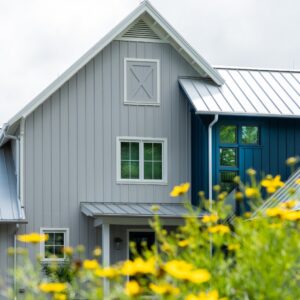 The Plan: Permaculture is an ecological design system, which we used to map out the plantings immediately surrounding the home and barn. We planned for alpine strawberries, chestnut, hickory, apple, cherry, and mulberry trees that would provide fruits and nuts for both us and the local wildlife. There would be numbered zones with the first closest to the home housing our vegetable and herb gardens. The Permaculture plan incorporated an interconnected system of ponds, cisterns, and bioretention basins to recharge the aquifer and direct water away from the home. Cranberries, elderberry, and paw-paw would soak up the water runoff. We envisioned water from the cistern irrigating the vegetable garden, and the interconnected system of water features would provide a home for insects and insect larvae to feed frogs.
The Plan: Permaculture is an ecological design system, which we used to map out the plantings immediately surrounding the home and barn. We planned for alpine strawberries, chestnut, hickory, apple, cherry, and mulberry trees that would provide fruits and nuts for both us and the local wildlife. There would be numbered zones with the first closest to the home housing our vegetable and herb gardens. The Permaculture plan incorporated an interconnected system of ponds, cisterns, and bioretention basins to recharge the aquifer and direct water away from the home. Cranberries, elderberry, and paw-paw would soak up the water runoff. We envisioned water from the cistern irrigating the vegetable garden, and the interconnected system of water features would provide a home for insects and insect larvae to feed frogs.
What Happened: We quickly realized the plants in any Permaculture plan take years to grow to maturity and many growing seasons. Deborah spent days getting seeds into the ground, and when our 315-foot bioretention swale grew in with more weeds than flowers, we weeded and mowed it ourselves repeatedly in time for a bounty of perennials to bloom in the late summer. The array of seed mixes perfectly suited to our soil and exposure to the sun came from a local nursery specializing in native plants and was well worth the wait, but we learned that parts of the colorful Permaculture plan beautifully sketched on drawing paper were, in fact, representative of an evolution that would only come to life over time.
We spent much of each day during summer watering the native plants that were purposely selected because they are “low maintenance” and easily establish themselves in our “normal” climate. We deliberately opted not to install an underground irrigation system throughout most of our 2.5-acre homestead area because once the plants are established, they require no additional watering, so no need to waste both money and resources.
In a typical year, we might have had to water the 1,000+ plants we planted (ourselves) once or twice while getting them established. In the summer of 2022, we set up a watering rotation that saw all of the young plants get water every second or third day. Although it exhausted us, less than 5% of what we planted died—a remarkable feat, but not something that was in “The Plan!”
What Happened: We quickly realized the plants in any Permaculture plan take years to grow to maturity and many growing seasons. Deborah spent days getting seeds into the ground, and when our 315-foot bioretention swale grew in with more weeds than flowers, we weeded and mowed it ourselves repeatedly in time for a bounty of perennials to bloom in the late summer. The array of seed mixes perfectly suited to our soil and exposure to the sun came from a local nursery specializing in native plants and was well worth the wait, but we learned that parts of the colorful Permaculture plan beautifully sketched on drawing paper were, in fact, representative of an evolution that would only come to life over time.
We spent much of each day during summer watering the native plants that were purposely selected because they are “low maintenance” and easily establish themselves in our “normal” climate. We deliberately opted not to install an underground irrigation system throughout most of our 2.5-acre homestead area because once the plants are established, they require no additional watering, so no need to waste both money and resources.
In a typical year, we might have had to water the 1,000+ plants we planted (ourselves) once or twice while getting them established. In the summer of 2022, we set up a watering rotation that saw all of the young plants get water every second or third day. Although it exhausted us, less than 5% of what we planted died—a remarkable feat, but NOT something that was in “The Plan!”
Building the Passive House Legacy Through Responsible Land Stewardship
The Plan: Like our commitment to Permaculture, organic regenerative farming was always part of the master plan for Cold Brook Farm. The decision to practice organic regenerative farming meant that Cold Brook Farm would need to be free of synthetic fertilizers, fungicides, pesticides, and genetically modified organism (GMO) plant material for three years.
New to farming, we did extensive research on regenerative agriculture best practice and commissioned a detailed geological assessment of the property that provided an analysis of soil type, soil health, climate, and weather patterns. With a history of commodity crop rotation and herbicide use, the assessment results for Cold Brook Farm were bleak. The land around the homestead needed extensive regeneration if we were to ever farm it successfully and healthfully. Another challenge—we wanted the land to be healthy enough to be a habitat for insects, birds, and wildlife native to the area.
What Happened: Our efforts to resuscitate the soil around Cold Brook Farm began even before we began construction on our home and included an initial addition of lime and compost. We then mapped out several initial crop rotations designed to kickstart the regeneration of the soil before turning our thoughts to thinking about our first harvest. We enthusiastically partnered with River Valley Community Grains (RVCG), an organization that works with farms to bring heirloom, organic grains back to New Jersey, and RVCG purchased Cold Brook Farm grains.
Cold Brook Farm had its first successful harvest in 2021 producing Danko Rye and Einkorn Wheat. In 2022, CBF harvested a small (due to the drought), but exceptional crop of Glenn Wheat, and the reception for the grains has been overwhelming, far outstripping the amount we can grow. To our delight, Blue Hill at Stone Barns featured Cold Brook Farm’s Einkorn Wheat on its winter menu, and other establishments purchased our grains too: Le French Dad Boulangerie, Bobolink Dairy & Bakehouse, Frenchette Bakery, and Otway.
Beyond R-Value: Insulation and the Zero-Energy Home
The Plan: The original design for our home incorporated “spatial versatility, multi-generational functionality, and separation of spaces [with each room] designed for usability, not for show.” Somewhat like the spokes of a wheel, the design concept was for the home to offer away spaces and studies removed from the busy inner hub. The hub would include a highly functional great room, kitchen, and dining spaces as well as areas to work on the harvest produce or just grab a snack.
Throughout Cold Brook Farm, rooms would have large floor-to-ceiling windows to bring the outdoors in, and the emphasis on the view of the outdoors meant the shape of the home would be long and L-shaped facilitating the efficient use of solar panels on the roof as well.
From cellulose insulation and a meticulously designed and constructed air-tight envelope to highly durable and energy efficient aluminum clad triple pane windows from Loewen and innovative TStuds™, we planned every aspect of the Cold Brook Farm building envelope with the WESKetch design-build team. The goal was a zero-energy home capable of creating all the energy used by the household over the course of the year from onsite, renewable sources. In the case of Cold Brook Farm, however, zero energy included 30,000 miles of driving electric vehicles making the choice of the solar power and associated battery storage system for the home essential.
The designing and constructing of a home is often thought by many to be a simple, systemic process. Perhaps it’s because the majority of the housing stock in the US is produced by corporate machines, using a mechanized system of construction born out of principles forged during the Industrial Revolution—a process that trades the economies of nuclear efficiency for creativity and originality leaving responsible design to choke in the wake of its smog.
It has been said that Americans choose their homes based on which one they dislike the least. For the DeSalvos, there would be no such compromise. Instead, there was commitment. Commitment to family, to earth, and to self. The idea that a home could be constructed responsibly, from the land not on the land. That every space would be designed and built with specific purpose—and still be adaptable for other functions. That the home would be healthy, energy-efficient, and enhance the lives of its occupants. These ideals, as simple as they sound, are highly complex. They require a holistic understanding of many different factors often opposing one another. The disciplined weaving of these forces ultimately creates the form of what is to be forever known as Cold Brook Farm.
The designing and building of a responsible home requires commitment and discipline from everyone involved in the process—from the owner to the cleaning crew. Without that, the broth can be spoiled. We were fortunate to have a visionary owner and a professional team with the willingness and expertise to pull it all together.
—Bill Kaufman, Founder & CEO, WESKetch Architecture + Construction
What Happened: Other than the guest room, every space is used every day at Cold Brook Farm. Optimizing the many systems operating throughout the home has taken a bit of tweaking and time. However, after one year at Cold Brook Farm, the home is comfortable, beautiful, and energy-efficient, and most importantly, easily meets the zero-energy home standard. In fact, during our first twelve full months, we generated almost five megawatts of excess clean, renewable energy beyond what we used (including all of our driving) that we happily sent back to the grid.
Having moved to Cold Brook Farm in pursuit of a dream, we could not have imagined calling another place home. The community in which we now live shares a deep sense of responsibility for land stewardship and is genuinely appreciative of what we are trying to do. Surrounded by wonderful friends and neighbors, we remain committed to the local community and help wherever we can. We hope to find an additional seven to ten acres for organic grain farming and continue to lay down our roots in this very special place we now call home.
In March 2022, Deborah joined the board of the Raritan Headwaters Association and does bird walks for the Tewksbury Land Trust. Jason joined the board of the Ethos Farm Project in February 2023 and the Ted Coven Council of the Tewkesbury Land Trust in January 2023. Daily, we do our best to give back to the community that gives so much to us.
We began by dreaming and this lasted for years. In the middle of 2019, we drew upon these dreams to develop a set of design goals for our sustainable homestead. The list was six, single-spaced pages and included everything from where our ideal property would be located, to the style of the house we would build on it to what kinds of agriculture we would pursue to how a great room would function as the “hub” for our farmhouse to the specific kinds of raw materials we would use to how much we could afford to spend.
We moved into Cold Brook Farm less than 27 months after first giving the list to Bill Kaufman, and living here is nothing short of the embodiment of our dreams. Our sustainable homestead achieved every one of our original design goals and provides us and our family more joy than we ever imagined…even in our dreams.
—Jason DeSalvo


